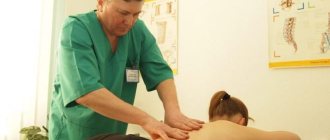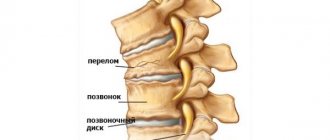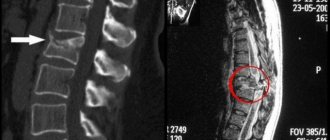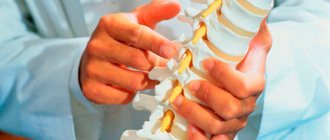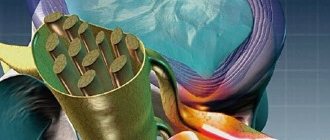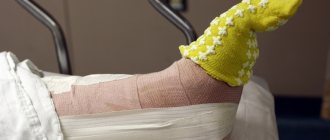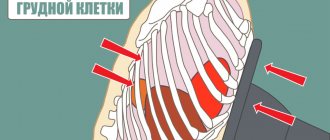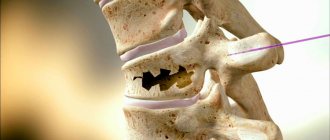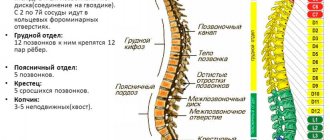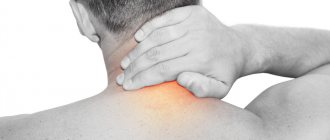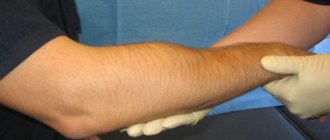Vertebral fractures are classified as severe skeletal injuries resulting from disruption of the integrity of the vertebral bones. They account for about 2.5% of all cases of fractures. Vertebral fractures are often combined with violations of the integrity of structures located in the immediate vicinity: ligaments, nerve roots, spinal cord, intervertebral discs.
Correct diagnosis and treatment of vertebral fractures plays an important role, because they form the spine - the support of the entire skeleton. Between the vertebral bodies there are intervertebral discs, which are cartilages that act as shock absorbers both when standing and when jumping, running and walking. The vertebrae consist of a body, an arch and processes. The latter connect them to each other, the upper arches surround the spinal cord, forming the spinal canal.
The Neurosurgery Department of CELT offers diagnostics and treatment of spinal fractures in Moscow. For more than two decades, we have been working in the market of paid medical services and offer accurate diagnostics using modern equipment and treatment in accordance with international standards.
What is a spinous process fracture?
Spinous process fracture is not a common injury. It occurs as a result of a strong blow or too strong muscle contraction. People who lead an active lifestyle, work a lot, and athletes complain about such injuries. Men aged 20 to 40 years are in a special risk group - they are most often diagnosed with such damage.
As a result of strong external influence, the integrity of the bone is disrupted. The spinal column in the lumbar region suffers the most, but a fracture of the spinous process of the cervical vertebra also occurs.
If the first signs of such an injury occur, you should contact an orthopedic traumatologist
, because not only bones and muscles can suffer, but also blood vessels and nerve roots. In particularly serious cases, this leads to disability.
Vertebral structure
To better understand the problem, let's understand how the human vertebra is structured. All 32-34 such bones in the human body have a similar structure and consist of an arch, a body and seven processes.
The body is the same vertebral cylinder that is best seen on numerous x-rays and skeletal models. A small arch is attached to it, which is necessary to form a cavity under the bone marrow and protect it. The processes surround the body - they provide a normal range of flexion of the neck and torso.
The spinous processes, which interest us in this article, extend backward from the vertebral body. They are connected by ligaments and muscles are attached to them. Unlike some other bony structures, such as the transverse process, they can be easily felt under the skin. And it is precisely because of their location that they suffer greatly from high loads and impacts.
Why does a vertebra break?
Statistics show that older people with a history of osteoporosis are most susceptible to trauma to the vertebral bodies. Osteoporosis is a severe bone disease that leads to thinning and decreased bone density, making them fragile and vulnerable to even minor physical stress. For a patient with this disease in severe form, sometimes it is enough just to sneeze or go down a step to cause a fracture and flattening of the weakest vertebra. Women, especially mature and retired women, suffer from osteoporosis more often than men, and therefore the predisposition of the female audience to CP is higher.
But a compression fracture of the spine, rehabilitation and treatment for which is a mandatory measure, is not only the lot of pensioners. It may well occur in young patients, including children, who have a completely strong and healthy spinal column. Typically, a violation of the integrity of the vertebrae occurs due to intense external mechanical impact on the back area, the force of which exceeded the physiological potential of the strength of the bone structure, in other words, due to severe injuries of various types (sports, household, etc.). Let us summarize and add what common unfavorable factors cause compression-type defects of the vertebral bodies, these include:
- falling from height onto legs, back, buttocks;
- a powerful blow that came to the ridge;
- lifting very heavy objects with a jerk;
- squats with a barbell in bodybuilding;
- all kinds of sports emergencies, in particular falls from high apparatus;
- a heavy object falling from above onto your back;
- a sharp blow to the head on the bottom of a reservoir when diving;
- traffic accident;
- diseases of bone tissue, especially osteoporosis;
- tuberculous and tumor neoplasms pressing on the spine.
Any of the 33 elements included in the structure of the main part of the human axial skeleton can be damaged at any level. According to clinical observations, the lumbar or thoracic region is most often affected, but keep in mind that with a compression fracture of the spine, rehabilitation begins only after the completion of the main treatment process.
Therapeutic and rehabilitation measures should be planned exclusively by a doctor, strictly on an individual basis. The etiology and scale of destruction, the number of injured bodies, the degree of their compression (reduction in height), post-traumatic complications, the personal characteristics of the patient’s body and much more - all this is taken into account when drawing up a treatment and rehabilitation program.
Symptoms of a spinous process fracture
Fractures of the spinous processes of the spine in the lumbar and cervical regions are largely similar in symptoms. Only the localization changes. Here are some signs of injury in different departments.
Cervical vertebra
- The direct symptom is severe pain. It occurs suddenly and is felt acutely. It gets worse when bending over and prevents you from turning your neck. Resonates in the head, forearms.
- The occurrence of edema. It is localized on the back of the neck.
- Limitation of mobility. It appears when muscle strain occurs in the area adjacent to the damaged area. A cerebrovascular accident may also occur, which occurs when the spinous process of the 7th cervical vertebra is fractured.
Lumbar
In many ways, the symptoms are similar:
- Severe pain when moving and limited mobility. With the lumbar region it is even more difficult than with the cervical region - it is often impossible to move the leg, this is accompanied by acute pain. Even in a quiet lying position one feels serious discomfort and the inability to move normally.
- Edema. It appears at the site of injury and often helps in diagnosis - it immediately becomes clear which place needs to be examined first.
- Change in sensitivity. This occurs when a nerve root is injured. Many patients may experience loss of sensation in their legs or arms. The tissues in the affected area also do not feel touch or even pain for a short period.
Cervical spine injuries
Fractures of the cervical vertebrae are usually localized in the area of 5-6 vertebrae, less often 4 and much less often 7. Multiple fractures of 2 or even 3 vertebrae are not uncommon. The nature of the fracture is most often compression, with a wedge-shaped deformity. The front corners are pressed in and the damaged vertebra takes on the appearance of a wedge. The intervertebral spaces are not changed. A variant of this type of fracture is a compression-angular one, in which, in addition to a wedge-shaped deformity, a separation of the anterior angle of the vertebra (anatomically the anterior part of the end plate), damage to the upper plate is detected, the lower one always remains intact. Compression fractures with uniform flattening of the cervical vertebra are rare. In the presence of dislocation in the joints of the arches and in the semilunar joints, the X-ray picture is similar to “pure dislocations”. In addition to the listed types of injuries, the 6th and 7th, as well as the 1st thoracic vertebrae are a favorite site for isolated avulsions of the spinous processes. The X-ray picture is typical: the direct projection image shows a downward displacement of the apex of the affected vertebra (spinous process) and the appearance of the “empty bed” symptom at the base of the process in the form of a ring; the lateral radiograph shows a picture of an oblique fracture. Fractures of the transverse processes with closed trauma are rare.
Fractures of the articular processes are:
- Cortical avulsions
- Oblique, predominantly affecting the interarticular sections of the arches or the bases of the articular processes
- Double, separating the entire articular process from the vertebral arch.
Subluxations of the cervical vertebrae are characterized by: angular kyphosis, an increase in the distance between adjacent spinous processes, stepped lines, a decrease in the contact surface of the articular processes, and limited function of the cervical spine.
In case of fracture-dislocation, the x-ray picture consists of traces. Components:
- Vertebral body fracture
- Ligamentous rupture
- Disc rupture
- Dislocation of a vertebra in the area of the articular processes
A special place among fractures is occupied by injuries to the 1st and 2nd vertebrae. Fractures of the atlas are observed in the form of anterior or posterior arch fracture, comminuted and burst fracture. If 2 vertebrae are damaged, the fracture line may pass in the area of the tooth or its base, in the area of the arch plate or its legs.
In case of injuries, an X-ray of the cervical spine in 2 projections is required; if a fracture of 1 or 2 vertebrae is suspected, an X-ray of 1 or 2 vertebrae through an open mouth is required. As well as additional examination in the form of MSCT, MRI.
Take care of your health!
Make an appointment with a traumatologist-orthopedist
Traumatologist-orthopedist - Titov Alexander Fedorovich
You can make an appointment by calling (391) 218−35−13 or through your personal account
First aid
A fracture of the spinous process of the lumbar spine or an injury localized in the cervical region may not make itself felt for some time - until the painful shock passes.
When the first signs of spinal injury appear, you need to lay the victim on a hard surface. It is desirable that it be suitable for intermediate transportation. Make sure the patient does not move. If a neck injury is suspected, create a makeshift rigid collar to provide support for the head and prevent accidental movements.
How is a spinous process fracture treated?
A fracture of the spinous process of the lumbar spine is treated according to an individually developed plan, taking into account the patient’s condition and the degree of complexity of his injury. Recovery takes place in a hospital, and most often it is possible to manage with conservative treatment. The patient is prescribed bed rest and put on a collar or corset that limits movement.
In case of severe pain, a course of analgesics is prescribed. Throughout the treatment, the doctor monitors the patient’s condition in order to quickly adjust the course of recovery. Additional diagnostics may be required.
Surgery is rarely used. If there is no need to remove a fragment stuck in the tissue, doctors prefer to use conservative treatment.
Rehabilitation
The rehabilitation process when recovering from a spinous process fracture is aimed at reducing pain and restoring normal mobility. The patient is shown:
- Massage. The procedure can take up to 20-25 minutes and is aimed at restoring blood circulation. This is especially important if the nerve roots were affected and the person was immobilized for a certain period of time.
- Physiotherapy. It is performed under the strict guidance of the attending physician according to a pre-designed program. It may include breathing exercises, turns of the torso and limbs. In this way, it is possible to gradually tone the muscles and launch the natural regeneration processes of the human body.
If you have suffered a fracture of the spinous process of the spine, you will need to reconsider your approach to stress and understand what led to the injury.
For several months after discharge from the hospital, you will need to wear a lumbar corset or a Shants collar. This is important to prevent vertebral confusion or other complications. If you follow the doctor’s requirements and take a careful approach to the rehabilitation system, you will be able to quickly restore all the functions of your body, you will be able to tilt your body normally and move your neck. For some patients, restrictions on lifting heavy objects and playing certain sports remain for life.
Rehabilitation after a spinal fracture
During the recovery period, the practice is to use the same methods as in the conservative treatment of spinal fractures, i.e.:
- drug therapy;
- wearing an orthopedic corset;
- gentle lifestyle;
- exercise therapy;
- massage;
- physiotherapeutic procedures.
The doctor determines their nature and duration individually. Therefore, if exercise therapy is initially gentle, then as the patient recovers, they move on to more active physical therapy exercises. The amount of load and duration of exercises are increased gradually, strictly monitoring the patient’s condition. At the final stages of treatment they are offered:
- simultaneously bend your legs at the knee and hip joints while lying on your back;
- lying on your back, raise your straight legs up, spread them to the sides, and then cross them together;
- perform the “bicycle” exercise;
- lift your chest off the floor and raise your arms from a position lying on your stomach;
- walk on your knees, etc.
If you can walk after such injuries on average after a month, then you are not allowed to sit for 4 months or more.
Also, patients with a fracture of the lumbar spine need to make certain changes in their diet. It is recommended to enrich the daily diet with foods that contain large quantities of easily digestible calcium, phosphorus, and B vitamins (fermented milk products, buckwheat, oatmeal, vegetables, etc.).
During treatment you will have to give up alcohol, fatty foods, processed foods and fast food. Yeast baked goods and confectionery products in large quantities are also not indicated, since during the recovery period the patient leads an inactive lifestyle. His energy costs are reduced, so excessive consumption of high-calorie foods can lead to weight gain, which will be difficult for a weakened spine to maintain.
After completing the main stage of recovery, patients are recommended to undergo sanatorium-resort treatment, which will not only have a positive effect on the condition of the spine and muscular frame, but will also help strengthen the entire body.
It is difficult to make prognoses for fractures of the lumbar spine. If the injury is uncomplicated, and the patient strictly adheres to the recommendations received from the doctor, especially regarding the immobilization regime, the fractures heal quickly, and the person’s ability to work is completely restored.
But if the spinal cord is damaged due to injury, especially if its rupture is diagnosed, sensitivity below the site of the injury completely and irrevocably disappears. This leads to paralysis and disruption of the pelvic organs.
